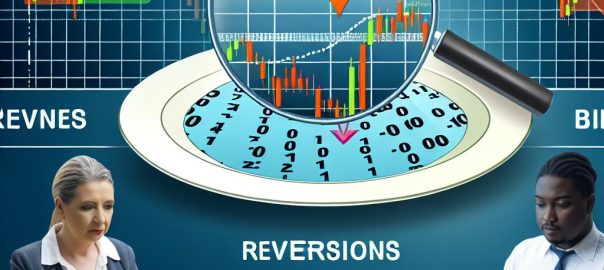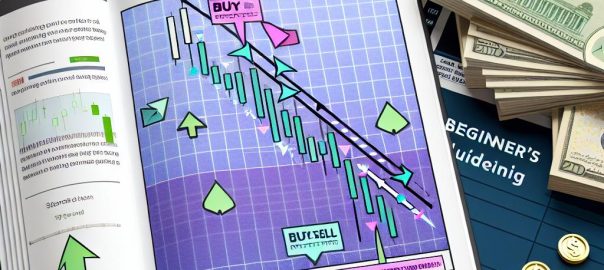How to Trade Binary Options Without Losing Too Much Money

Understanding Binary Options
Binary options trading may appear simple at first glance, but it involves a critical understanding of financial markets and risk management. At its core, binary options trading revolves around predicting if the price of a particular asset will rise or fall within a stipulated time frame. The all-or-nothing nature of this trading means that if your prediction is correct, you receive a fixed payout. Conversely, incorrect predictions result in the loss of your investment. Due to its seemingly straightforward concept, many traders find binary options attractive. However, this simplicity is deceptive, as it carries inherent significant risks that must be carefully managed.
Choosing a Reputable Broker
One of the first steps in safe binary options trading is selecting a reputable broker. This decision plays a pivotal role in your trading journey. A broker acts as your intermediary in executing trades and safeguarding your investments, so it’s crucial to choose wisely. Opt for brokers regulated by well-known financial authorities. Such regulation offers an additional security layer for your investments because it ensures the broker operates within specific guidelines and industry standards. These guidelines are designed to protect traders, ensuring fair trading practices and minimizing the risk of fraud. In essence, working with a regulated broker enhances your chances of having a positive trading experience.
Developing a Trading Strategy
An effective trading strategy cannot be overstated in its importance when trading binary options. Developing a well-thought-out plan is fundamental to minimizing potential losses and maximizing gains. Start by investing time in learning different trading techniques and understanding market dynamics. Familiarity with technical analysis, which includes using charts, patterns, and various technical indicators, is indispensable. Such tools can empower you to make informed and objective decisions.
However, theoretical knowledge alone isn’t enough. Before committing real money, it’s prudent to test out your strategies using a demo account. A demo account allows you to simulate the trading environment without financial risk, enabling you to refine your approaches. The experience gained here can be instrumental in adjusting strategies based on performance, ultimately boosting your confidence and effectiveness in live trading situations.
Implementing Risk Management
Risk management is a cornerstone of any successful binary options trading plan. Effective risk management involves setting boundaries for your trading activities, with the primary goal of preserving your capital. Begin by determining the fraction of your total trading capital you are comfortable risking per trade. An advisable approach is to keep this figure as a small percentage, ultimately protecting your investment portfolio from catastrophic losses that might occur from one or a few unfavorable trades.
Utilizing Trade Size Appropriately
One critical aspect of risk management is the appropriate allocation of trade size. Avoid the allure of placing all your resources into a single trade, which could lead to significant losses if the trade doesn’t go as planned. Instead, distribute your investment across multiple trades to balance the risk. Each trade size should not only fit within your overall risk management strategy but also align with your long-term investment objectives.
Setting Stop-Loss Limits
While binary options trading doesn’t typically offer traditional stop-loss orders, implementing personal stop-loss limits is advisable. Before beginning any trading session, clearly define the maximum loss you are willing to accept. Adhering to these self-imposed limits helps prevent impulsive decisions driven by emotions, especially when facing highly volatile markets.
Educational Resources and Continuous Learning
In the realm of binary options trading, continuous learning is indispensable for sustained success. The markets are dynamic, constantly evolving with new trends and techniques. To stay ahead, take advantage of a wide array of educational resources available. These include online courses, webinars, and articles that provide valuable insights into trading strategies and market developments.
In addition, engaging with more experienced traders and participating in online discussion forums can offer fresh perspectives and practical advice. Regular practice, especially through demo accounts, is essential to refine skills, understand market operations better, and evolve as a trader.
Avoiding Emotional Trading
Achieving success in binary options trading entails a disciplined approach where decisions are driven by analysis rather than emotions. Often, letting emotions guide trading decisions leads to poor choices and substantial financial losses. Maintaining a calm and calculated approach is key. Stick to predetermined strategies, and refrain from getting caught up in market hype or sudden fluctuations that might tempt you to deviate from your plan.
Recognizing and Avoiding Scams
Unfortunately, the world of binary options trading isn’t devoid of fraudulent activities. Scammers often exploit inexperienced traders by making promises of guaranteed high returns or claiming to have discovered secret, surefire strategies. These schemes can seem alluring, but it’s crucial to exercise caution. A legitimate broker is transparent about risks and doesn’t shy away from discussing the potential downsides involved in trading. Skepticism towards too-good-to-be-true claims is wise, and prudence in verifying the authenticity of brokers and their licensing information is essential.
Incorporating these practices can significantly enhance your binary options trading experience while minimizing potential losses. If you’re looking for more comprehensive guidance on specific trading strategies or seeking further financial education, don’t hesitate to explore additional resources through reputable platforms such as Investopedia.


